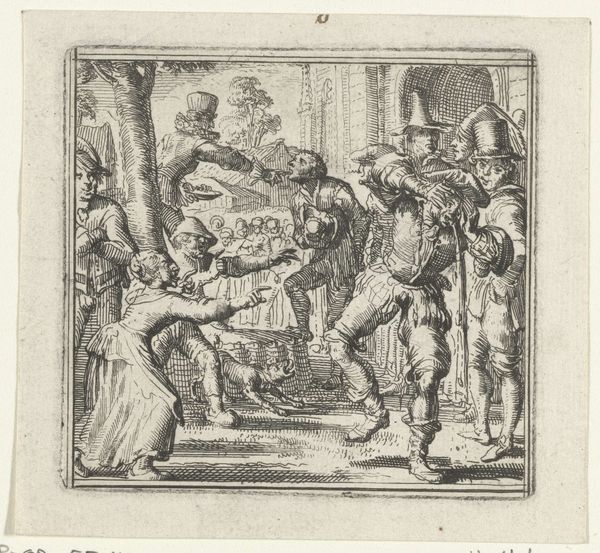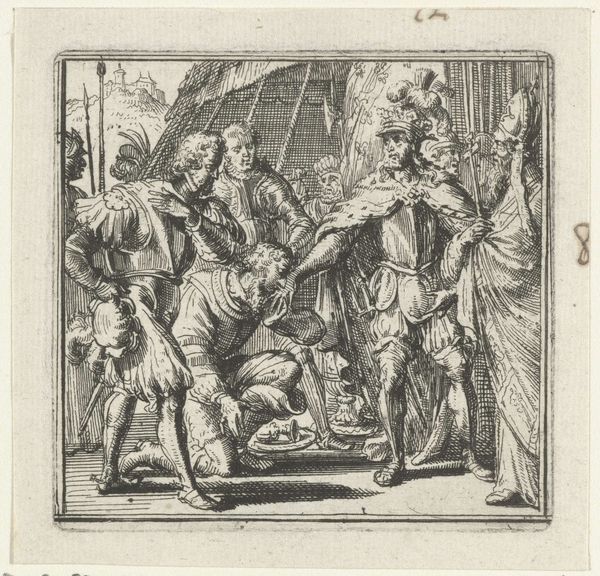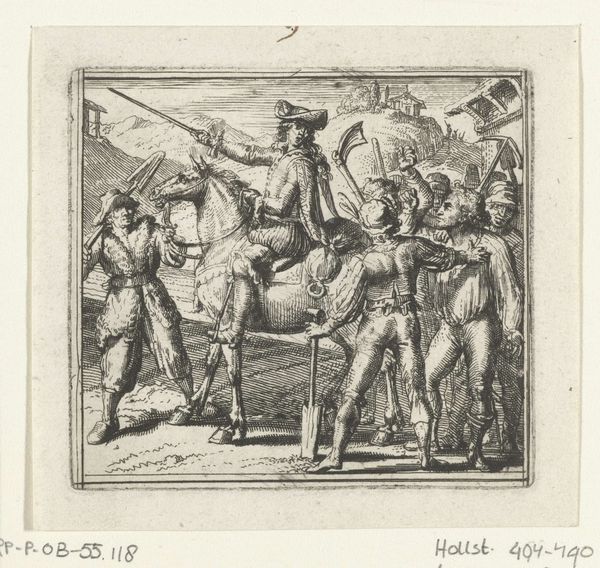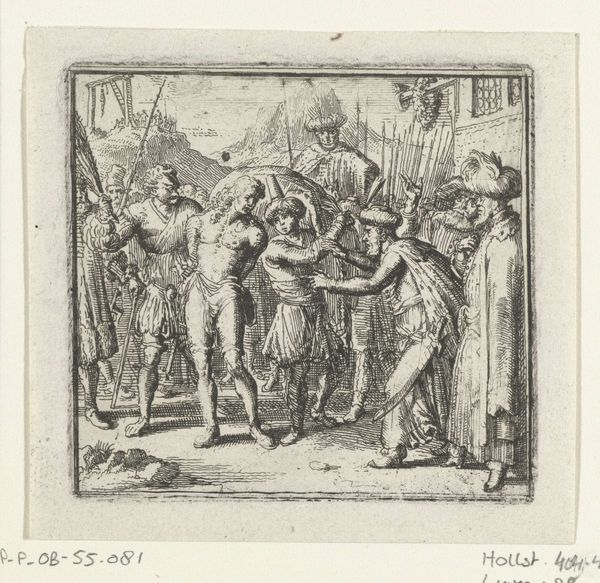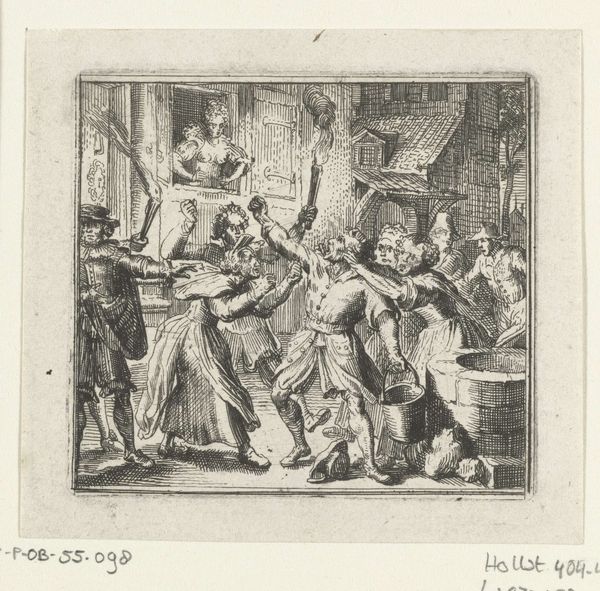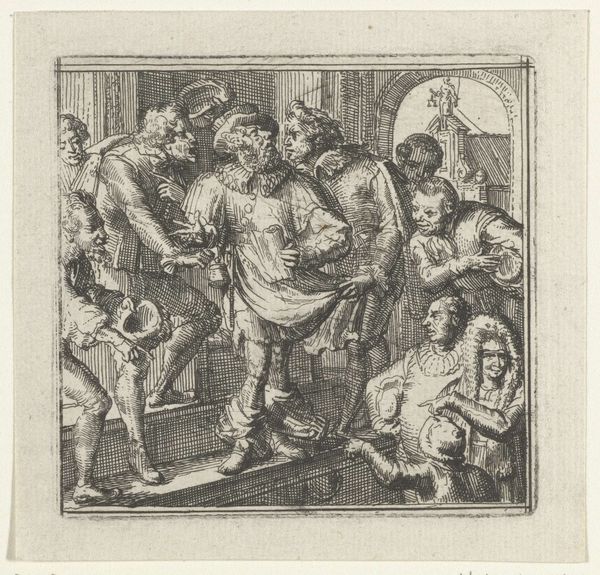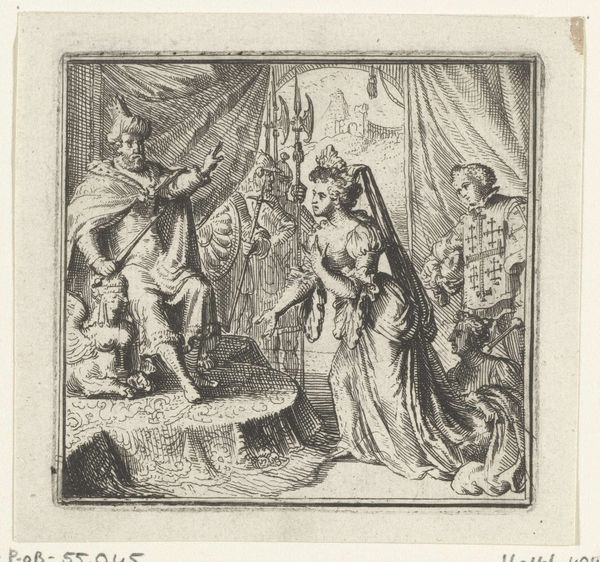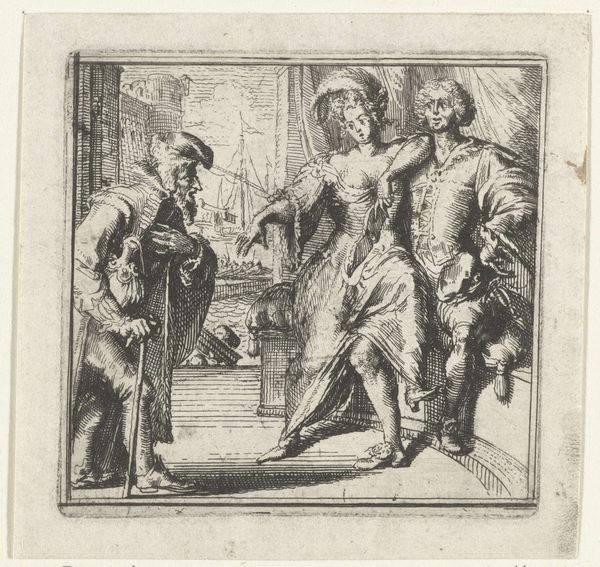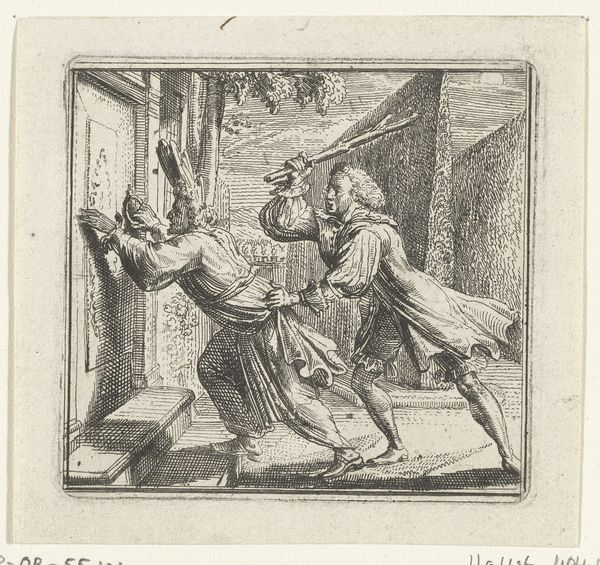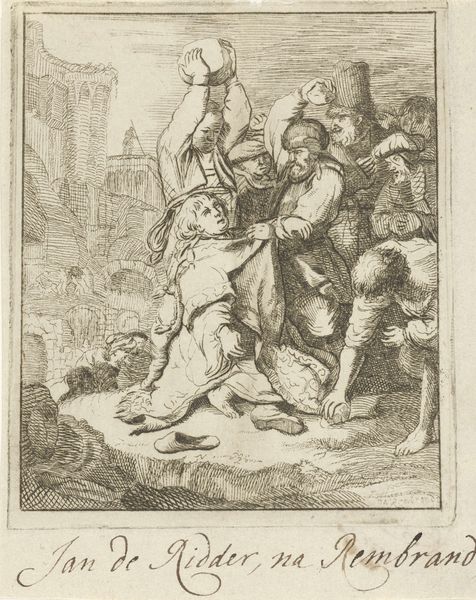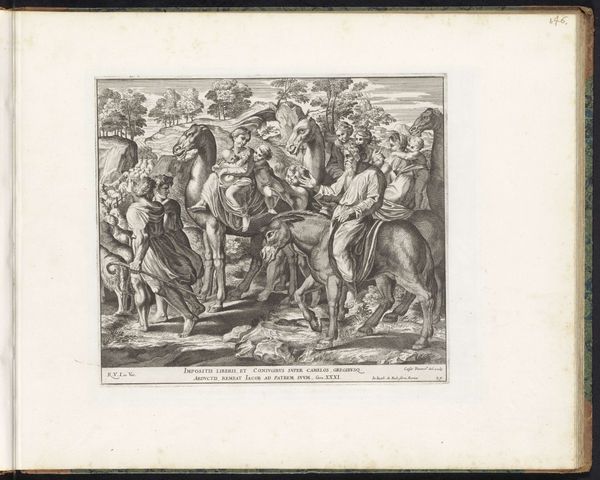
print, engraving
#
narrative-art
#
baroque
# print
#
pen sketch
#
old engraving style
#
figuration
#
history-painting
#
engraving
Dimensions: height 75 mm, width 79 mm
Copyright: Rijks Museum: Open Domain
Curator: This engraving, made in 1697 by Romeyn de Hooghe, is entitled "Illustratie voor de Decamerone van Boccaccio," part of our prints collection. Editor: Whoa, intense! Everyone’s fighting, or at least flailing. The linework is incredibly tight, packed with energy… chaotic, but contained, you know? Curator: Indeed. De Hooghe’s work frequently exhibits such dynamic scenes. Note the interplay of light and shadow, achieved through varying line thicknesses and cross-hatching. Editor: Cross-hatching for days! Gives it that smoky, dramatic Baroque vibe, even on this tiny scale. But what's actually going on? It looks like some abduction or uprising in Renaissance garb. Curator: You are not far off. This print likely depicts one of the many colorful tales found within Boccaccio’s *Decameron*. Its narratives often explore themes of love, fortune, and human folly amidst times of plague and social upheaval. The style reflects baroque conventions blended with elements appropriate to illustrating 14th-century Italian stories. Editor: Right, so you have a modern hand trying to depict an old tale, with a somewhat old feel! I dig the layered thing! It’s all super heightened, you can practically hear the screams and clashes of steel. Curator: Observe the composition; despite the riotous activity, De Hooghe maintains a structured layout, leading the eye through specific narrative points. This piece exemplifies history painting's aim to teach moral lessons by representing human experience. Editor: Mmm, right. So beyond the chaos, there’s an intended order… which, thinking about it, reflects Boccaccio's own work; framing bawdy stories within the serious context of the Black Death! Curator: Precisely. De Hooghe was adept at using printmaking to give narrative complexity to visual drama. His manipulation of line served a representational goal and added significant interpretive dimensions. Editor: This piece's raw, almost desperate energy and precise artistic control—show how artists can wrestle with history, bending styles and forms to explore enduring human drama. I love how such an antiquated artwork keeps speaking into our messy moment. Curator: Yes, through de Hooghe’s engagement with history we gain perspective not only on Boccaccio, but also the visual grammar of that historical understanding and the continued possibilities that this history presents today.
Comments
No comments
Be the first to comment and join the conversation on the ultimate creative platform.
